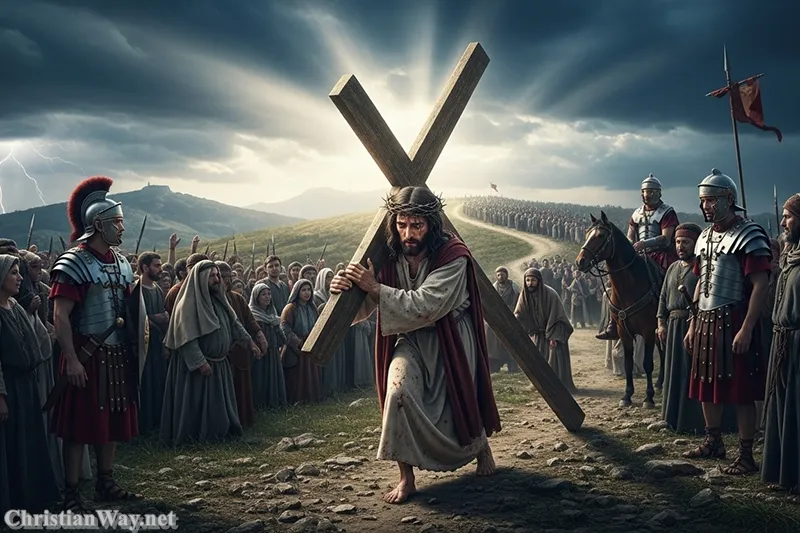Dear friends in Christ,
Every generation of believers owes its faith to those first men and women who heard the voice of Jesus and answered it with their whole lives. Among the Twelve Apostles, there is one whose name is spoken less often, yet whose witness shines with quiet power — Saint Bartholomew, also known as Nathanael in the Gospel of John. His story may not fill many pages of Scripture, but his example continues to echo through the centuries as a sign of sincerity, courage, and unwavering faith.
Saint Bartholomew was a man of truth — a soul transparent before God, unafraid to stand in the light. When Jesus first saw him under the fig tree, He declared, “Behold, an Israelite indeed, in whom there is no guile” (John 1:47). In those words, Christ revealed something essential about this apostle: he was pure of heart, sincere in his seeking, and ready to follow wherever truth led.

The life of Saint Bartholomew reminds us that the Christian vocation begins not with grandeur, but with honesty — the willingness to let God see us as we truly are. From that openness flows the grace to become what God desires: a witness of truth, a bearer of light, a missionary of love even to the farthest corners of the earth.
The Calling of Nathanael: A Heart Without Guile
The Gospel of John introduces us to Bartholomew under the name Nathanael. It was Philip, his friend and fellow disciple, who came to him with excitement and conviction: “We have found Him of whom Moses in the Law and also the prophets wrote, Jesus of Nazareth, the son of Joseph.” Nathanael’s response was skeptical but honest: “Can anything good come out of Nazareth?” (John 1:45–46).
That simple question reveals much about the man. He did not flatter or pretend. He sought truth, even if it required doubt. Yet when he encountered Christ, his skepticism dissolved before divine presence. Jesus said to him, “Before Philip called you, when you were under the fig tree, I saw you.” Overwhelmed, Nathanael exclaimed, “Rabbi, you are the Son of God! You are the King of Israel!”
The Mystery of the Fig Tree
Many Fathers of the Church, such as Saint Augustine and Saint Gregory the Great, saw deep symbolism in the fig tree. It represented contemplation, the place of prayer, or the inner life of the soul. There, hidden from the world, Nathanael sought God sincerely — and it was precisely there that Christ saw him.
This encounter between Jesus and Nathanael shows that God meets the honest heart in the secret places. Before we act, before we speak, He already knows our desires and our doubts. Bartholomew’s heart was ready for truth, and when Truth itself stood before him in the flesh, he recognized it immediately.
Bartholomew the Apostle: A Man of Mission
Once called, Bartholomew became one of the Twelve, sent out by Jesus to proclaim the Kingdom of God. Tradition tells us that after Pentecost, he journeyed far from Jerusalem, carrying the Gospel to distant lands. Ancient sources — including Eusebius of Caesarea and various early Christian writings — tell of his missionary work in India, Persia, Armenia, Mesopotamia, and parts of Arabia.
A Missionary to the East
In Armenia, Bartholomew’s name is held in deep reverence. Together with Saint Thaddeus (Jude), he is venerated as one of the first to bring Christianity to that land. For this reason, the Armenian Apostolic Church honors him as one of its founding saints.
In some accounts, Bartholomew carried with him a copy of the Gospel of Matthew in Hebrew, sharing it among the faithful of the East. His preaching was marked not by rhetoric or power, but by humility and miracles. He healed the sick, cast out demons, and brought peace to the afflicted — not for his own glory, but as signs of Christ’s living power working through him.
His life stands as a testimony that truth must be carried outward, beyond comfort and homeland, into the unknown. The Apostle who once doubted what good could come from Nazareth became the very one who carried the Good News to nations who had never heard the name of Jesus.
The Martyrdom of Saint Bartholomew
Like many of the Apostles, Saint Bartholomew’s faith led him to martyrdom. According to early traditions, he was executed in Armenia or possibly in Albanopolis, suffering one of the most brutal deaths recorded among the saints. He was flayed alive for proclaiming Christ before pagan rulers, and then beheaded or crucified.
The Witness of His Martyrdom
To modern ears, such accounts may seem distant and terrible, but in the eyes of faith, Bartholomew’s death is not a defeat. It is the completion of his testimony — the sealing of his truth. The man “without guile” remained faithful to Truth Himself even to the shedding of his blood.
His martyrdom reminds the Church that the Gospel is not an idea to be debated, but a reality worth dying for. As Jesus said, “Greater love has no man than this, that a man lay down his life for his friends” (John 15:13). Bartholomew lived that love to its fullest expression, following his Lord into the mystery of the Cross.
The flaying of Saint Bartholomew became an image of stripping away the false self — the masks, the pride, the illusions — until only the soul, pure and naked before God, remains. In this sense, his suffering mirrors the purification of all who seek to belong wholly to Christ.
Saint Bartholomew in Scripture and Tradition
Though the name Bartholomew appears in the Synoptic Gospels and the Acts of the Apostles, and Nathanael in John, most scholars agree they refer to the same person. The name “Bartholomew” means “son of Tolmai” — likely a family designation — while “Nathanael” means “God has given.” Together, these names beautifully express his identity: a man given by God, born into truth and destined to bear witness to it.
In the Apostolic Lists
Bartholomew is always listed among the Twelve (Matthew 10:3, Mark 3:18, Luke 6:14, Acts 1:13), often paired with Philip, the friend who first led him to Christ. Their friendship becomes a symbol of Christian evangelization — one soul leading another to the Savior.
In the Early Church
The earliest Church Fathers held great reverence for Saint Bartholomew. Eusebius mentions that when Pantaenus, a missionary from Alexandria, visited India in the second century, he found there the Gospel of Matthew in Hebrew — left, it was said, by Bartholomew himself. Saint Jerome repeats this account, affirming that the apostle’s missionary zeal extended to the furthest edges of the known world.
The veneration of Saint Bartholomew spread rapidly. Churches were dedicated to him across the Roman Empire. His relics were eventually brought to Rome and enshrined in the Church of Saint Bartholomew on the Island (San Bartolomeo all’Isola) in the Tiber River — a place still visited by pilgrims today.
Lessons from Saint Bartholomew’s Life
Saint Bartholomew’s legacy offers the Christian soul several timeless lessons, each deeply relevant to our age of uncertainty and spiritual restlessness.
1. The Beauty of Sincerity
Jesus praised Nathanael as a man “without guile.” That rare quality — authenticity of heart — remains a cornerstone of Christian discipleship. In a world full of pretense, Bartholomew teaches us that truth begins in the heart. When we approach God and others with honesty, we open ourselves to divine grace.
The Church needs disciples like him — men and women unafraid to speak truth gently, to live transparently, to let faith shape every hidden corner of life.
2. The Call to Go Beyond Comfort
Bartholomew did not stay where he was comfortable. He journeyed to distant lands, crossed linguistic and cultural barriers, and risked everything for the Gospel. His life challenges us to look beyond our own circles, to share Christ’s love even where it seems unwelcome or unknown.
Mission is not always geographical — it can mean entering another person’s suffering, forgiving where it is hard, or bringing peace where there is division. Wherever truth and charity are carried, there stands the spirit of Saint Bartholomew.
3. The Cost of Discipleship
His martyrdom reminds us that following Christ has a cost. For some, that cost is public witness; for others, it is silent perseverance in suffering. But the essence is the same: love that endures, even when it hurts.
Bartholomew’s flaying may seem extreme, yet it symbolizes what every Christian must endure in some form — the stripping away of ego and comfort so that the image of Christ may shine more clearly within us.
Saint Bartholomew in Art and Symbolism
Artists through the centuries have found profound meaning in Saint Bartholomew’s story. In Michelangelo’s “Last Judgment” in the Sistine Chapel, the saint is depicted holding his own flayed skin, upon which Michelangelo famously painted his own face — a symbol of repentance and transformation.
His traditional symbols include:
- The knife, representing his martyrdom.
- The Bible or Gospel, symbolizing his missionary preaching.
- The fig tree, recalling his first encounter with Christ.
These symbols invite us to reflect on the journey of faith: the Word that calls us, the truth that purifies us, and the love that sustains us through suffering.
The Feast and Devotion to Saint Bartholomew
The Feast of Saint Bartholomew the Apostle is celebrated on August 24 in the Roman Catholic Church and on various dates in the Orthodox and Eastern Catholic calendars. It is a day not only to honor his memory, but to renew our own commitment to truth and missionary zeal.
Pilgrims who visit the Basilica of Saint Bartholomew in Rome often pray for purity of heart, courage in witness, and strength to remain faithful in adversity. In the Armenian Church, his feast is joined with that of Saint Thaddeus, recalling the apostles who first sowed the seeds of faith in their land.
The Apostle of Truth for Our Time
In our modern age, truth is often twisted, hidden, or dismissed. Yet the witness of Saint Bartholomew speaks directly to this struggle. His life shows that truth is not an idea but a Person — Jesus Christ, the Word made flesh. To be “without guile” is to let Christ’s truth live within us, shaping our words, our decisions, and our hearts.
Bartholomew’s mission to the East mirrors the Church’s mission in every age: to carry the light of the Gospel into new territories — not only geographically, but spiritually — into hearts darkened by doubt or despair. His courage and simplicity remain a model for every Christian disciple today.
May we, like Saint Bartholomew, be found under the fig tree — honest, waiting, and ready to respond when the Lord calls. And may our faith, like his, travel far beyond our comfort, bearing witness to the Truth that sets us free.
Reflect and Pray
O Lord Jesus Christ,
You saw Nathanael beneath the fig tree and called him to be your apostle.
Grant us hearts as pure and sincere as his,
that we may recognize You when You draw near.
Through the intercession of Saint Bartholomew,
give us the courage to bear witness to Your truth
and the strength to carry Your Gospel to the ends of the earth.
May our lives, like his, reflect the beauty of honesty,
the fire of faith, and the joy of serving You.
Amen.
— Fr. John Matthew, for Christian Way





